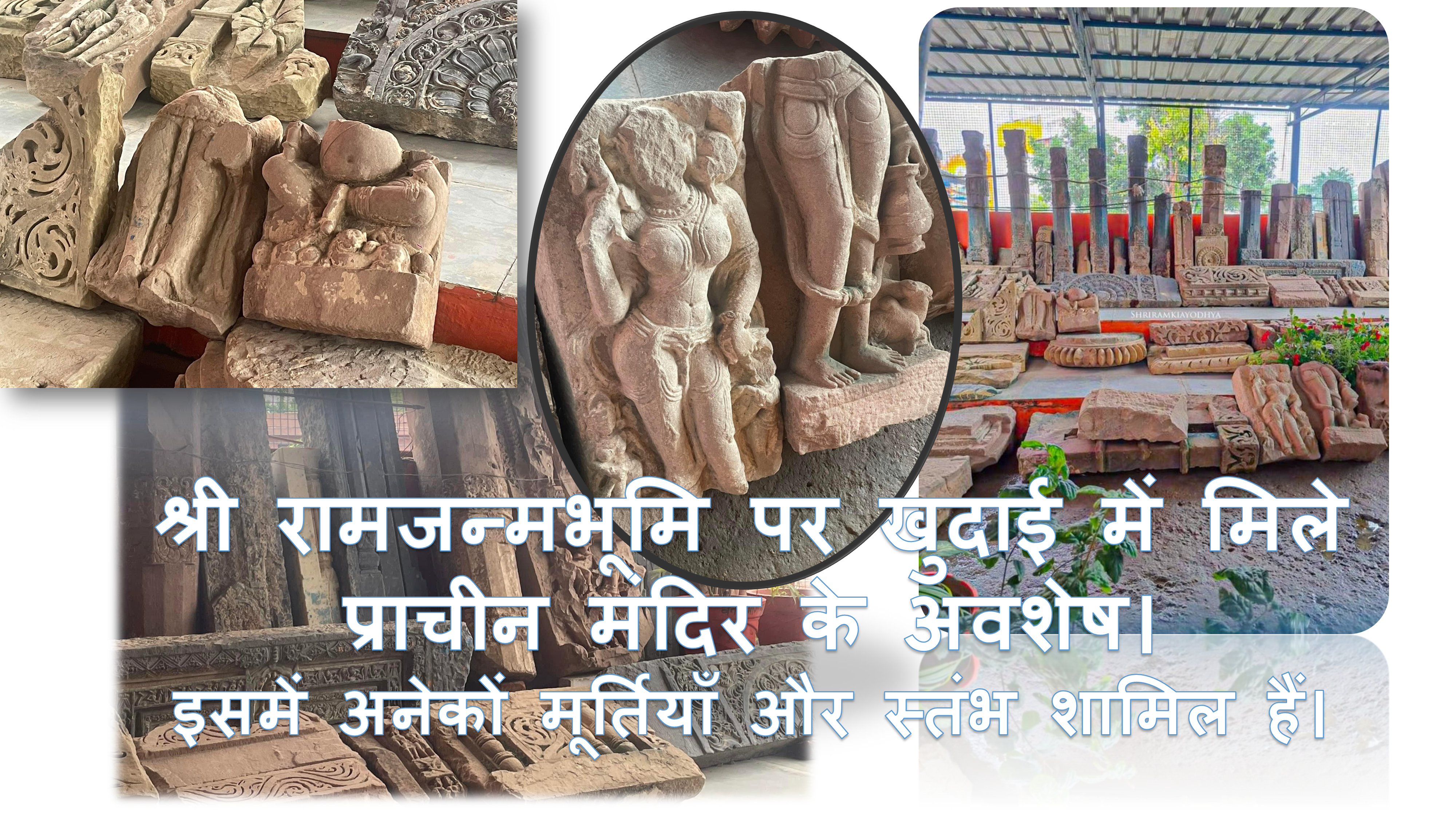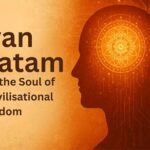
There were archaeological findings at the disputed site in Ayodhya that played a significant role in the Supreme Court’s verdict. However, it’s important to note that the findings were contested and interpreted differently by different parties. Here’s a summary of the key points:
Findings Suggestive of a Temple:
- Pillar bases: Excavations conducted by the Archaeological Survey of India (ASI) in 2003 revealed 50 pillar bases arranged in 17 rows, suggesting the presence of a large structure beneath the Babri Masjid. pillar bases found at Ayodhya.
- Temple artifacts: Idols, figurines, and architectural fragments related to Hindu temple construction were also discovered.
- Building materials: Bricks used in the foundation of the Babri Masjid were found to be different from those typically used in mosque construction, potentially indicating the reuse of an earlier structure.
Findings Suggestive of Muslim Presence:
- Muslim graves: Two Muslim graves were found within the excavated area, indicating the presence of a Muslim community at the site at some point.
- Arabic inscriptions: Inscriptions in Arabic were found on some of the architectural fragments, suggesting a possible Islamic connection to the earlier structure.
Interpretations and Controversies:
- Hindus: The findings were interpreted by Hindus as conclusive evidence of a pre-existing temple dedicated to Lord Rama, supporting their claim to the site.
- Muslims: Muslims argued that the findings were inconclusive and could be interpreted in various ways. They also questioned the methodology and impartiality of the ASI’s excavations.
Supreme Court Verdict and Archaeological Evidence:
- The Supreme Court acknowledged the archaeological findings as part of the evidence considered in its decision. However, it did not solely rely on these findings and also considered historical records, religious texts, and oral testimonies.
- The Court ultimately ruled in favor of the Hindu parties, awarding the disputed land for the construction of a Ram temple.
References:
- Archaeology of Ayodhya: https://en.wikipedia.org/wiki/Ayodhya
- Ayodhya dispute: https://petervas.files.wordpress.com/2013/03/ayodhya.pdf
- Supreme Court verdict on Ayodhya dispute: https://timesofindia.indiatimes.com/india/live-updates-supreme-court-verdict-in-ayodhya-case/liveblog/65974616.cms
- www.pgurus.com
It’s important to remember that the archaeological findings in Ayodhya are complex and subject to different interpretations. This summary provides a brief overview of the key points and should not be taken as a definitive conclusion on the historical events.
I hope this information is helpful.
Summary of the Supreme Court verdict on the Ayodhya dispute
The Supreme Court of India delivered a unanimous verdict on the Ayodhya dispute on November 9, 2019. The Court ruled in favor of the Hindu parties, awarding the disputed land for the construction of a Ram temple. The verdict also directed the government of India to allot 5 acres of land in a prominent location in Ayodhya to the Sunni Waqf Board for the construction of a mosque.
The Court’s decision was based on a multi-pronged approach, including archaeological findings, historical records and texts, oral testimonies, legal precedents, constitutional values, and faith and belief.
Archaeological Findings
Excavations conducted by the Archaeological Survey of India (ASI) in 2003 revealed 50 pillar bases arranged in 17 rows, suggesting the presence of a large structure beneath the Babri Masjid. Idols, figurines, and architectural fragments related to Hindu temple construction were also discovered. Bricks used in the foundation of the Babri Masjid were found to be different from those typically used in mosque construction, potentially indicating the reuse of an earlier structure.
Historical Records and Texts
Documents and scriptures provided evidence of Hindu worship at the site for centuries. For example, the 16th-century Ayodhya Mahatmya, a Hindu religious text, mentions the existence of a temple dedicated to Lord Rama at the site.
Oral Testimonies
Witness accounts corroborated the historical documentation and oral traditions related to the site’s significance for Hindus. For example, several witnesses testified that they had seen idols of Lord Rama at the site before the Babri Masjid was built.
Legal Precedents
The Court considered relevant legal principles and past judgments on property rights and land ownership disputes. For example, the Court relied on the principle of adverse possession, which states that someone who has continuously occupied land for a certain period of time can acquire ownership of that land.
Constitutional Values
The verdict emphasized upholding secularism, rule of law, and principles of justice. The Court stated that the decision was based on the Constitution of India, which guarantees religious freedom and equality to all citizens.
Faith and Belief
The Court acknowledged the deep faith and emotional attachment of Hindus to the site as Lord Rama’s birthplace. However, it did not solely rely on faith as a legal basis for its decision.
The Supreme Court’s verdict was a landmark decision that brought an end to a long-standing dispute that had divided India for decades. The verdict was widely welcomed by Hindus, who saw it as a victory for their faith. However, the verdict also sparked protests from Muslims, who felt that their religious rights had been violated.
The Supreme Court’s decision has had a significant impact on India, both socially and politically. The verdict has helped to promote religious harmony and understanding in the country. However, it has also raised questions about the role of religion in Indian law and society.
The Supreme Court’s verdict on the Ayodhya dispute is a complex and nuanced decision that has had a profound impact on India. The verdict is a reminder of the importance of religious freedom, equality, and justice in a democracy.
Judgement PDF source ( official) : https://www.sci.gov.in/pdf/JUD_2.pdf
![]()



